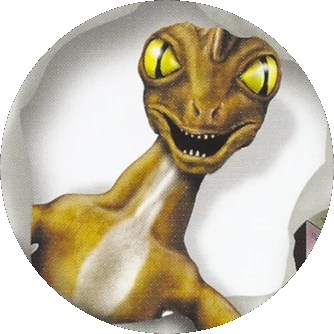It's a jungle out there, but the treehopper comes equipped to survive. Not only are these insects great leapers (as their name says), but they have a bag full of defenses. Some species have punk-looking spiked heads that can poke through an attacker's jaw. Some sport great camouflage and look like parts of a plant; some treehoppers are even poisonous. These insects do have friends: ants help them get out of what could be sticky situations.
Hippity Hop: These insects got their names from their habit of using their long hind legs to leap from one plant to another. The creatures land on stems and unfold their sharp, hollow beaks to drink sweet sap from plants.
Top Hat: Many species of treehopper have spiky horns on their heads, which discourage predators from eating the insects. Some have two small horns, while others have a single large one, almost like a rhinoceros horn.
Stuck on Sweets[]

Adult treehoppers are colorful and dwarf the juveniles of the species.
Treehoppers eat only sugary sap from plants, so their waste takes pretty much the same form-a sweet, sticky fluid called honeydew. Letting out too much of this can actually "glue" a treehopper to a plant if it stays in the same place too long. Never fear. Many ant species eat the honeydew, keeping the treehoppers from becoming stuck. The ants even protect the treehoppers so there will always be a fresh supply of the sweet snack.
In Disguise: Treehoppers have many ways to hide themselves. Some look like small leaves so enemies won't notice them among the plants. One species has a growth on its rear that looks like an ant with its jaws wide open, which may scare off some attacker.
Yuck!: Being attacked is unavoidable for some insects. Some treehoppers have poison glands beneath their skin, just in case. The poison isn't strong enough to kill, but makes the treehoppers taste so bad that enemies spit them out.
De-Fense[]
- Some treehoppers are so well camouflaged that they look like parts of the plants on which they feed. Some species look so much like thorns on a plant stem that enemies don't even give the insects a passing glance.
- Poisonous treehoppers are often brightly colored as a warning to potential predators that they're venomous, or at least taste bad. Even these species can be attacked, though, so they often gather in groups for added protection.
Trivia[]
- The second part of "De-Fense" erroneously lists the treehoppers as venomous instead of poisonous, after clarifying they are the latter.
- The second species of treehopper in "De-Fense" are also known as thorn bugs (Umbonia crassicornis).
